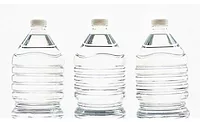Multicultural, Generation X consumers most likely to drink bottled water, Packaged Facts reports
Marketers should utilize social media, mobile devices to reach these consumers
Sixty million adults consumed an average of at least one glass of bottled still water in each of the past seven days, reports Packaged Facts, the Rockville, Md.-based division of MarketResearch.com. According to a new report titled “Bottled Water in the U.S.” by the market research firm, the majority of these consumers tend to be younger than the adult population as a whole. Consumers in the 35- to 44-year-old age group exhibit the highest likelihood of frequent bottled water consumption, it states in the report. These consumers also are interested in staying physically fit and also are more likely to drink thirst-quencher or activity drinks, it states.
In addition, members of the multicultural population segment tend to drink relatively large quantities of bottled still water as well, the market research firm reports. Frequent bottled water consumers are 31 percent more likely than average to be Hispanic and 36 percent more likely to be African American, according to the report. The multicultural character of those drinking large amounts of bottled water also means that they are more likely to live in a household with children under the age of 18, it notes. In addition, because multicultural consumers are more likely to live in large households, these groups also are relatively big spenders in grocery stores, it states.
To reach these younger, multicultural consumers, beverage marketers should leverage social media and mobile device advertising, Packaged Facts suggests. According to the report, consumers who drink relatively large quantities of bottled water have an above-average degree of receptivity to the advertising they see on mobile devices and social media. For example, compared with adults on average, these consumers are far more likely to be interested in receiving advertisements on their cellphones and to purchase products they see advertised on their cellphones. They also are much more likely to purchase products they see advertised on social sharing/networking websites, it states.
For more information about this report, visit the Packaged Facts website.
Looking for a reprint of this article?
From high-res PDFs to custom plaques, order your copy today!







